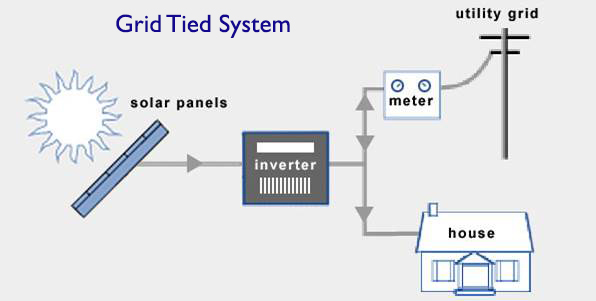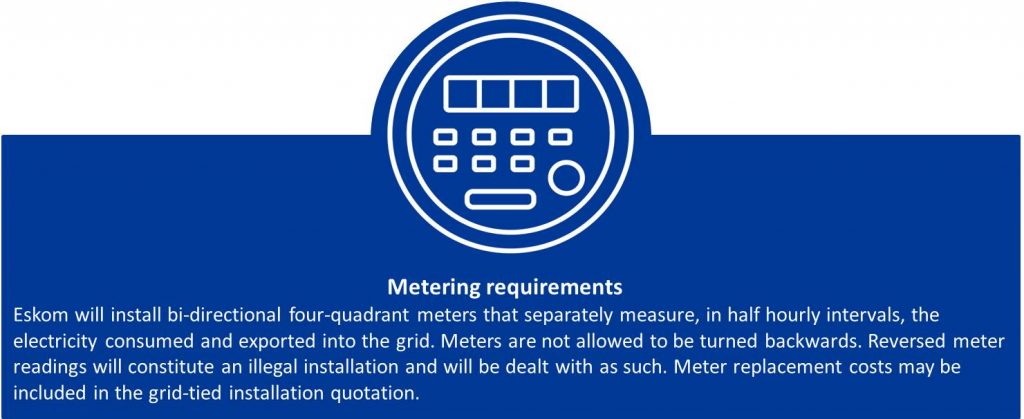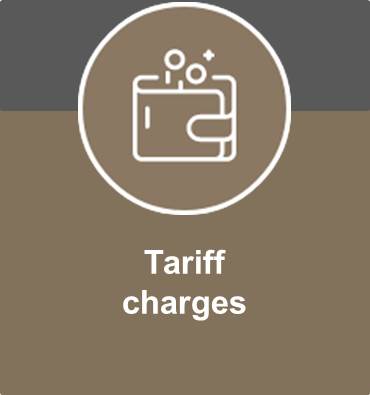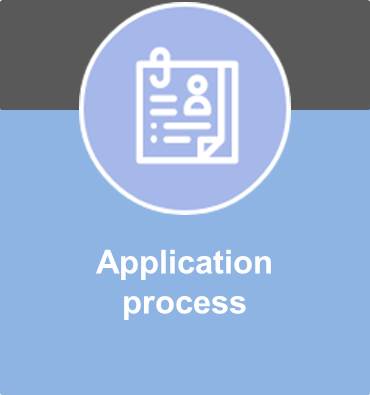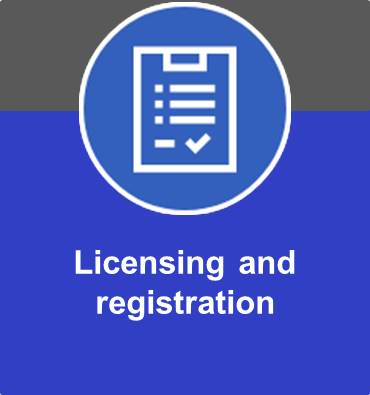
Generator network configurations
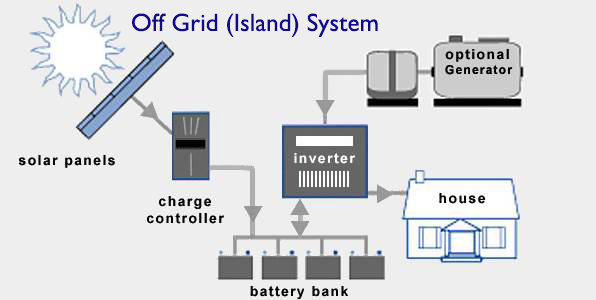
An off-the-grid system:
An off-grid, or stand-alone system, does not have a point of connection that ties the generator to the Eskom electricity distribution network. The generator is therefore completely independent of the power grid and does not need an Eskom supply to work. This type of generator network configuration does not require authorisation from Eskom and is also exempt from registration with the National Energy Regulator of South Africa (NERSA).
A standby generator configuration:
A standby, or back-up electrical system may or may not be grid-tied. For a grid-tied standby system, you will need to apply to Eskom to authorise the generator. Generators that are not grid-tied do not require an Eskom point of connection to work, and as such do not require Eskom authorisation. In both cases, the standby generator does not need to be registered with NERSA, subject to it only being used during electricity supply interruptions.
Installations designed to consume all the generated power (non-export)
This generator network configuration provides electricity to your property when required, is grid-tied, but designed to not export energy into the Eskom power grid.
Given that this installation is grid-tied, it will require Eskom authorisation, even though it does not export energy into the distribution network. Eskom authorisation can be obtained via application, payment of fees and signing new contracts covering the tariff, legal, regulatory and technical requirements.
The Eskom connection and use-of-system agreement will specify the maximum export capacity (MEC) at zero kW. Tariff charges will not apply, but there may be costs incurred for the grid connection. Any export of energy will constitute a breach of the Eskom agreement and the supply may be disconnected.
Depending on the criteria set out in Schedule 2 of the Electricity Regulation Act (ERA), the generator will either require registration or licensing, or be exempted from registration with NERSA.
Installations designed to export power into the grid:
In this generator network configuration, not all generated electricity is consumed. Some or all of it is exported into the grid for the purposes of getting an energy offset credit on your account, or for wheeling the energy to another customer so they can get an energy offset credit on their account.
This type of grid-tied generator connection requires Eskom authorisation, and depending on the criteria set out in Schedule 2 of the ERA, will either require registration or licensing, or be exempted from registration with NERSA.
Eskom authorisation includes application, payment of fees and signing new contracts covering the tariff, legal, regulatory, and technical requirements.
The Eskom connection and use-of-system agreement will specify a maximum energy export capacity into the grid as determined by the customer. Tariff charges may be applicable for the exported energy, and there may be costs related to connect the generator to the national grid.
